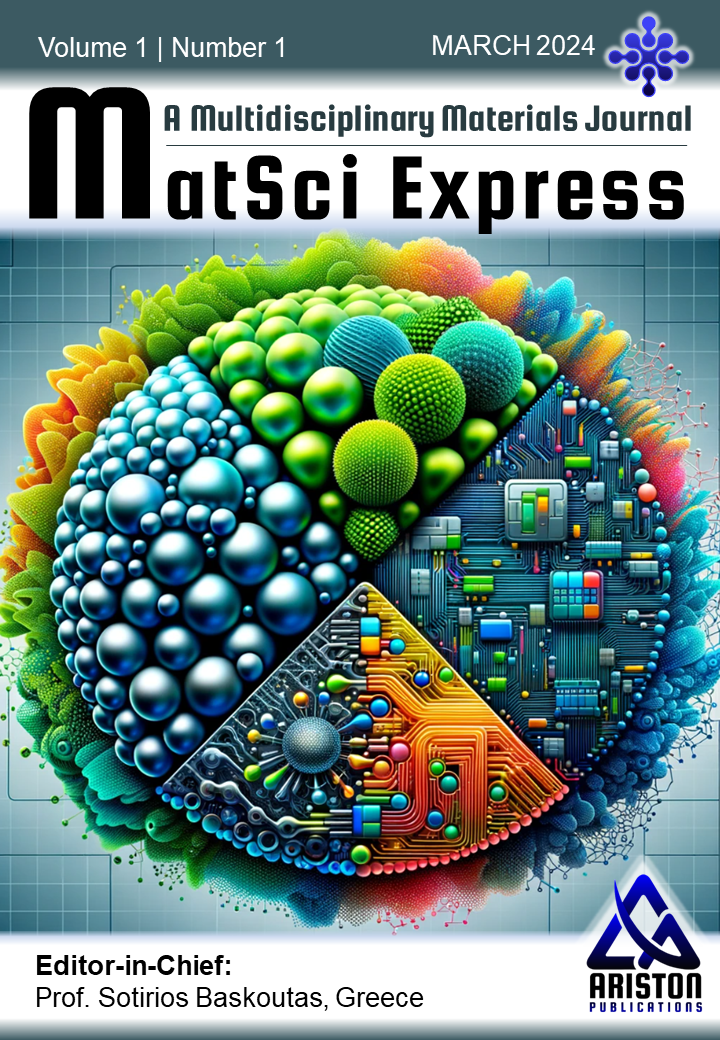Nikos Aravantinos-Zafiris, Fotios I. Michos, Mihail M. Sigalas
1 Department of Environment, Ionian University, Zakynthos, 29100, Greece.
2 Department of Materials Science, University of Patras, Patras 26504, Greece.
* Author to whom correspondence should be addressed:
naravadinos@ionio.gr (Nikos Aravantinos-Zafiris)
ABSTRACT
This study presents a comprehensive computational investigation of the vibrational properties of calcium monochalcogenide nanoparticles (NPs) using Density Functional Theory (DFT). The NPs were systematically constructed from an initial cubic-like building block, Ca₄Y₄ (Y = S, Se, Te), and their geometries were modified through elongation along one or two perpendicular directions, resulting in nanostructures of varying sizes (x = 4, 8, 16, 32, 36) and morphologies (cubic, elongated, and hollow-centered). The vibrational spectra were computed following structural optimization with the PBE functional and the def2-TZVP basis set, revealing key trends in resonance frequencies and infrared intensities (IRI). The results demonstrate that vibrational characteristics are strongly influenced by both the chalcogenide element and the NP’s structural dimensionality. Sulfur-based NPs exhibited the highest vibrational frequencies (up to 344 cm⁻¹) and strongest IR intensities, while tellurium-based NPs displayed the lowest frequencies due to their higher atomic mass. One-dimensional nanostructures (e.g., Ca₁₆Y₁₆-1d) exhibited the most intense vibrational modes, with IRI values reaching 2849 km/mol for Ca₁₆S₁₆-1d. Larger NPs (x = 32, 36) showed additional vibrational modes in the 250–350 cm⁻¹ range, with hollow-centered structures introducing defect-related resonances. These findings highlight the tunability of vibrational properties through size, shape, and composition, providing critical insights for applications in nanophononics, optoelectronics, and energy conversion. The study establishes a foundation for future experimental work on calcium monochalcogenide NPs, particularly in phonon engineering and nanoscale device design.

Significance of the Study:
This study provides crucial insights into the vibrational properties of calcium monochalcogenide nanoparticles, demonstrating how size, composition, and morphology influence their phononic behavior. The findings reveal strong infrared-active modes, particularly in 1D nanostructures, suggesting potential applications in nanophononics, IR sensing, and thermal management. The systematic comparison across chalcogenides (S, Se, Te) establishes design principles for tailoring vibrational properties in non-toxic, earth-abundant nanomaterials.
Summary of the Study:
Density functional theory (DFT) was employed to investigate the vibrational spectra of CaₓYₓ (Y=S, Se, Te) nanoparticles (x=4–36). Results showed size-dependent phonon modes, with 1D structures exhibiting the strongest IR activity. Sulfur-based NPs displayed the highest frequencies, while tellurium analogs showed the lowest. Larger NPs (x=32,36) revealed complex spectra with defect-induced modes, highlighting their tunability for nanoscale applications.
